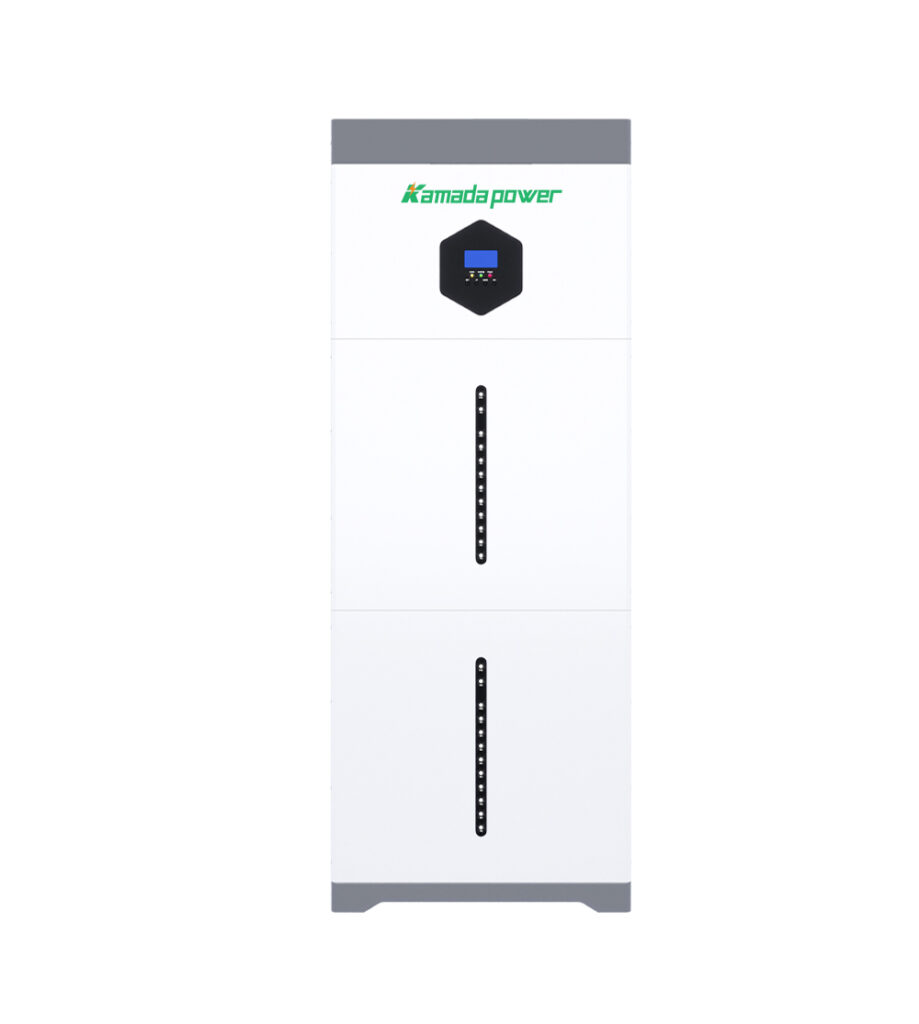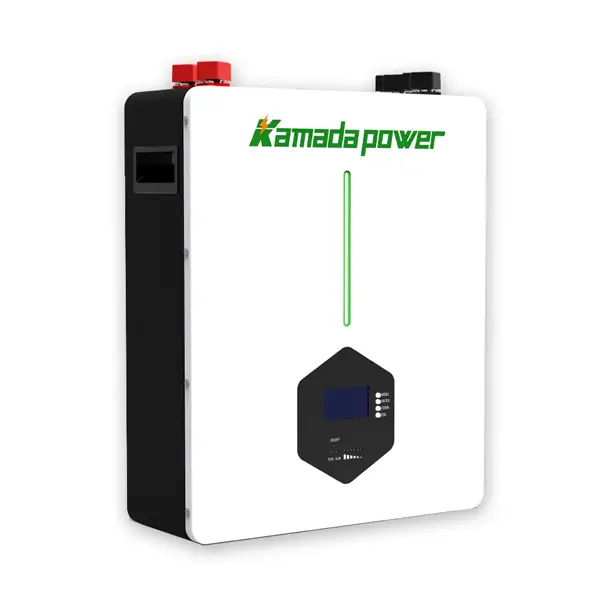Pravděpodobně jste si toho všimli - vaše domácí systém skladování energie už nevydrží spát celou noc. Systém, který dříve napájel váš domov od západu do východu slunce, se nyní vypíná před svítáním. Plně jej nabíjíte ze solárních panelů, přesto se vybíjí rychleji než dříve.
Znamená to, že se vaše baterie LFP (LiFePO₄) opotřebovává? Nebo by to mohlo být něco, co se dá skutečně opravit? To je jedna z nejčastějších otázek, které dostáváme od majitelů domů i od instalatérů solárních zařízení. Pravdou je, že ne každá "degradace" je skutečná - někdy je to jen zmatení vašeho systému správy baterií (BMS). Pojďme si rozebrat, co se ve vaší baterii skutečně děje.

48V 200Ah 10kwh All In One Solar Storage System Hybridní systém Vestavěný měnič

10kWh baterie Powerwall Home Battery pro ukládání energie
Pochopení degradace baterií LFP: Trvalá vs. obnovitelná ztráta
Ne každý pokles kapacity znamená, že se baterie vybíjí. Ve skutečnosti existují dva druhy degradace:
- Trvalé chemické stárnutí, což nelze zvrátit.
- Zjevná degradace, což je často jednoduchý problém kalibrace.
1. Nevratná chemická degradace
Všechny lithiové baterie přirozeně stárnou. Každý cyklus nabíjení a vybíjení způsobuje malé, trvalé chemické změny:
- Některé ionty lithia se zachytí a nemohou se dále pohybovat.
- Aktivní látky uvnitř buněk se pomalu rozkládají.
Představte si baterii jako nádrž na vodu o objemu 100 galonů. Během tisíců cyklů se nádrž fyzicky zmenší na 85 galonů. Těch chybějících 15 galonů je nadobro pryč - to je skutečné stárnutí.
2. "Zjevná" degradace, kterou lze obnovit
Ale tady je dobrá zpráva: většina náhlých poklesů kapacity domácích energetických systémů není vůbec chemická. Jsou to problémy se softwarem - konkrétně s BMS ztrácí stopu skutečných úrovní náboje.
Protože baterie LFP mají velmi plochá křivka napětí, systém BMS nedokáže snadno rozlišit například mezi nabíjením 50% a 80%. V průběhu stovek cyklů se tyto malé chybné údaje kumulují.
Nakonec si BMS myslí, že vaše "100% plná" baterie je plná pouze 95%. Skutečná kapacita se nezměnila - "palivoměr" se pouze mýlí. A stejně jako palivoměr v autě jej lze překalibrovat.
Jak překalibrovat domácí baterii LFP
Přesně tento problém jsme pomohli vyřešit tisícům majitelů domů a montážních firem. Tento postup nevyžaduje otevření baterie - stačí pouze řízená rekalibrace celého cyklu.
Cíl: Synchronizace systému BMS se skutečnou kapacitou baterie
Tento proces "převychovává" systém BMS a nutí ho znovu se naučit, co skutečně znamená plný a prázdný. Po rekalibraci bude monitor baterie opět zobrazovat přesný stav nabití (SoC).
Postup rekalibrace ve 3 krocích
- Krok 1: Plně nabít a podržet ("namočit") Nabijte baterii na 100%. Po nabití, udržujte spojení po dobu dalších 2-8 hodin. To umožňuje systému BMS provádět špičkové vyvažování, čímž se zajistí vyrovnání všech buněk.
- Krok 2: Řízené propouštění Používejte svůj domov jako obvykle. Spusťte spotřebiče a nechte systém nepřetržitě vybíjet, dokud SoC neklesne pod 20%.
- Krok 3: Dobíjení v jednom nepřetržitém cyklu Jakmile je baterie téměř vybitá, dobijte ji během jediného nepřerušovaného sezení až na 100%. Toto přejetí zdola nahoru pomáhá systému BMS přemapovat skutečnou využitelnou kapacitu.
Výsledky a očekávání
Po jednom nebo dvou cyklech rekalibrace obvykle zaznamenáte zřetelné zlepšení. Systém se například může vrátit z 6 hodin nočního provozu zpět na 7,5 hodiny. Těchto 1,5 hodiny navíc je vaše "ztracená" zdánlivá kapacita - nyní je obnovena. Jakýkoli zbývající rozdíl představuje skutečné chemické stárnutí způsobené dlouholetým používáním.
Osvědčené postupy pro prevenci budoucí degradace
Jakmile je systém BMS zkalibrován, správné návyky údržby mohou pomoci zabránit zdánlivému i skutečnému zhoršení stavu.
1. Pravidelné plné poplatky
Na rozdíl od baterií NMC jsou články LFP preferují pravidelně dosahovat plného nabití. Ujistěte se, že váš domácí systém dosáhne hodnoty 100% alespoň jednou týdně, aby se systém BMS udržel zkalibrovaný.
2. Řízení teploty
Baterie LFP jsou stabilní, ale dlouhodobé vystavení vysokým teplotám (nad 45 °C) urychluje skutečné chemické stárnutí. Pokud je baterie nainstalována v garáži nebo ve venkovní jednotce, zajistěte řádné větrání nebo zastínění, abyste ji udrželi v ideálním teplotním rozmezí.
3. Mělké cykly pro delší životnost
Zatímco plné cykly jsou užitečné pro rekalibraci, denní mělké cykly jsou pro baterii šetrnější. Například cyklování v rozmezí 30-80% je mnohem méně namáhavé než každodenní cyklování 0-100% - ideální pro solární systémy pro ukládání energie do sítě.
4. Tipy pro dlouhodobé skladování
Pokud budete několik měsíců pryč, uložte systém na 50-70% nabití a odpojte jej od zátěže. Tento jednoduchý postup významně prodlužuje dlouhodobé zdraví baterie.
Závěr
Degradaci baterií LFP lze zvrátit - pokud je způsobena spíše chybnou kalibrací BMS než skutečným chemickým stárnutím. Zatímco přirozené stárnutí je nevratné, zjevná ztráta kapacity je často jen otázkou rekalibrace. Pokud vaše domácí systém skladování energie již nevydrží tak dlouho jako dříve, může provedení úplného rekalibračního cyklu obnovit hodiny využitelné energie a zlepšit přesnost systému. Tento jednoduchý krok pomáhá majitelům domů, distributorům a instalatérům udržet vyšší výkon, delší životnost baterie a větší spokojenost zákazníků.
Kontaktujte nás náš technický tým a naplánujte si profesionální kontrolu stavu baterie a zajistěte, že váš systém LFP bude spolehlivě napájet i v následujících letech.
ČASTO KLADENÉ DOTAZY
1. Jak poznám, zda je ztráta kapacity skutečná, nebo se jedná pouze o drift BMS?
Proveďte jeden úplný rekalibrační cyklus. Pokud se doba běhu znatelně zlepší, jednalo se o problém BMS. Pokud ne, jde pravděpodobně o skutečné chemické stárnutí. Váš instalatér to může potvrdit kontrolou údajů o stavu (SoH).
2. Může rekalibrace poškodit baterii?
Vůbec ne. Jedná se o bezpečný, výrobcem doporučený postup údržby, který pomáhá systému BMS zůstat přesný.
3. Jak často bych měl provádět rekalibraci?
Ideální je jednou za 3-6 měsíců nebo kdykoli zaznamenáte náhlý pokles dostupné kapacity.
4. Je LFP stále lepší než NMC pro domácí skladování energie?
Rozhodně. Bezpečnost, dlouhá životnost a tolerance k plnému nabití činí z LFP preferovanou chemii pro domácí úložiště - i když vyžaduje občasnou rekalibraci BMS.